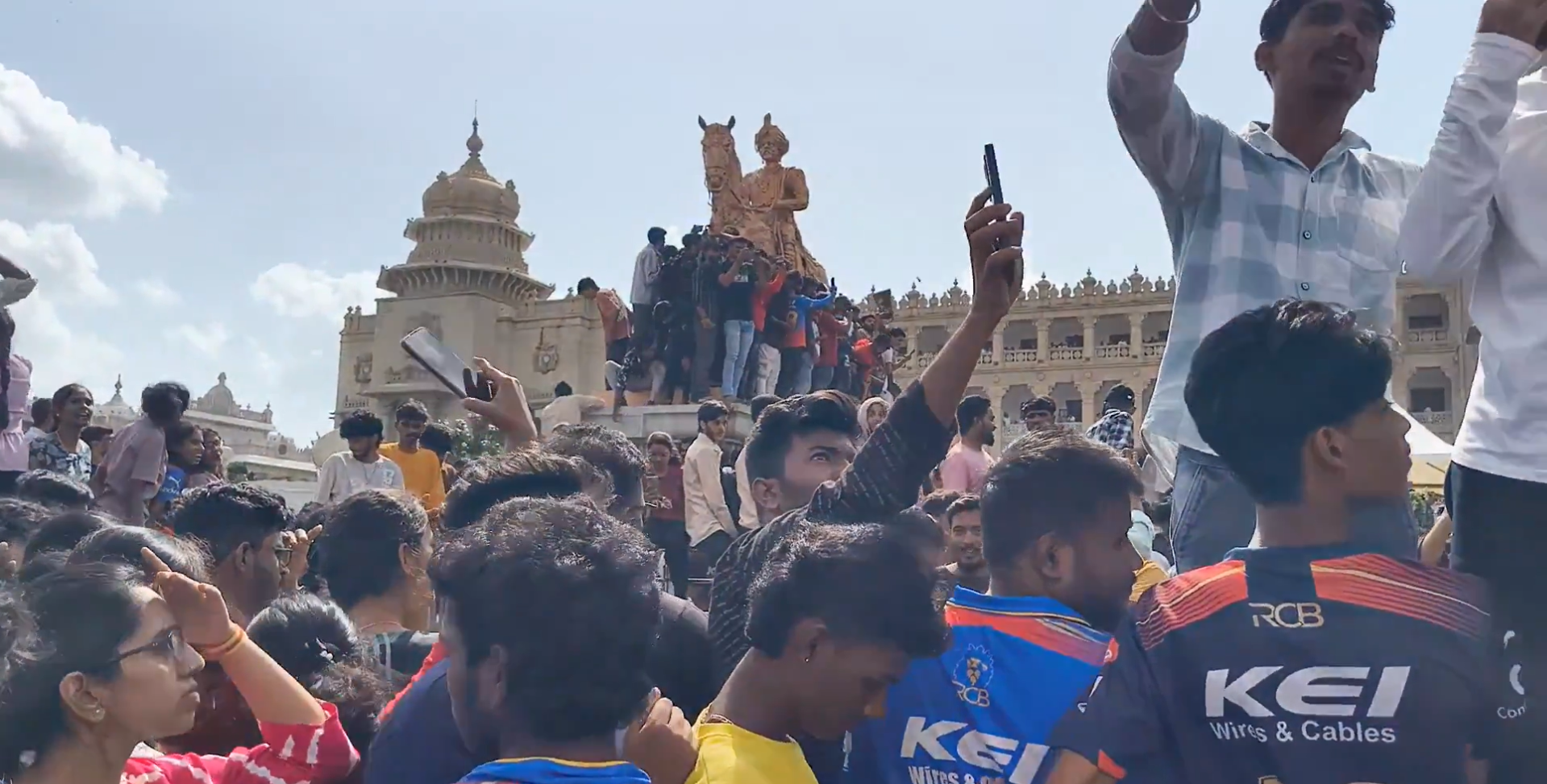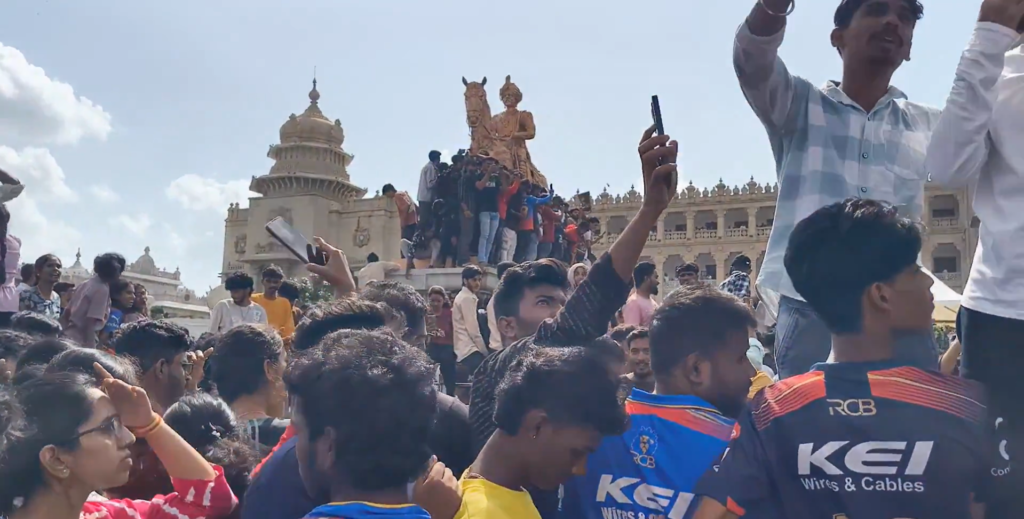
By Trisha Ghosal
Yesterday was meant to be the day Bengaluru erupted in a cacophony of crimson and gold, a triumphant roar echoing 18 years of unwavering faith. The IPL 2025 trophy, finally in RCB’s grasp, symbolised more than just cricketing prowess: it was the ultimate vindication for a fanbase legendary in its devotion. But as the grim reports solidify, that joyous narrative has been violently rewritten. The tragic stampede at the victory parade, claiming lives and leaving scores injured, serves as a brutal and agonising testament to how quickly collective passion can morph into perilous chaos. It shows how fans, even the most ardent and well-meaning, can fall prey at the altar of a peculiar, often unintentional, form of hooliganism.
As a sports journalist covering the pulse of fandom for years, and indeed, as a fan myself, this particular heartbreak cuts deep. We laud the “12th Man”, the boundless energy, the deafening chants of “Ee Saala Cup Namde!”, that define RCB’s colossal following. This is the bedrock of sport: the emotional core. Yet yesterday, that very core proved vulnerable. What unfolded wasn’t premeditated malice, but a devastating consequence of unmanaged enthusiasm. It was a collective human surge where individual agency dissolved into a dangerous, undifferentiated mass. This is the insidious nature of modern hooliganism. It doesn’t always wear the face of violence. Sometimes, it is the sheer, unbridled force of aspiration meeting inadequate planning.
The facts, as they emerge, paint a stark picture. Reports of police initially denying clearance, followed by an apparent franchise-led “go-ahead”, funnelled over two lakh hopefuls into an area demonstrably incapable of holding them. The desperate surge of ticketless crowds, the breaching of security barriers, the raw, primal crush for a glimpse of their heroes, these aren’t the acts of reasoned individuals. These are the classic symptoms of crowd pathology, where the desire to be part of a historic moment overrides self-preservation and civic order. Fans, driven by an almost magnetic pull towards their idols, become susceptible to the collective impulse. They are, in essence, ‘prey’ to the crowd’s momentum. They lose their individual ability to perceive risk or react rationally, often swept along by the very tide they are contributing to.
Who bears responsibility for this catastrophic breakdown? Was it the hurried decision to parade without robust collaboration with city authorities? Was it the failure to accurately gauge the sheer, overwhelming magnitude of the RCB fanbase, whose loyalty has consistently dwarfed even their on-field results? Or was it the very fans themselves, whose desperate yearning pushed boundaries that should have been uncrossable? It is a complex and painful intersection of inadequate infrastructure, insufficient foresight, and the potent, sometimes uncontrollable, force of collective emotion.
This tragedy is a searing indictment. It is a stark lesson etched in sorrow. For franchises, for event organisers, and critically, for us, the fans, it is a profound call to introspection. Celebrations, no matter how monumental, must be meticulously engineered with fan safety as the non-negotiable priority. Communication must be unimpeachable. And we, the supporters, while our passion is the lifeblood of sport, must recognise the immense power, both exhilarating and destructive, of our collective presence. Bengaluru deserved a triumphant procession, not a mournful inquest. The lives lost yesterday are a haunting reminder that the thin line between fervent support and dangerous disorder can be tragically and fatally breached. It can turn the beautiful game’s highest moments into its darkest.
Follow Revsportz for latest sports news
Also Read RCB victory parade stampede: Time to impose celebration guidelines




